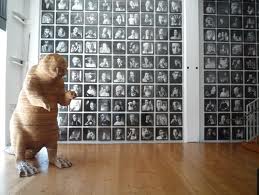This was the first in what turned out to be a long series of posts, in which I and many readers highlighted people, groups, and institutions making new departures in classical music, doing things in new ways. This wasn’t even close to a complete list, but it was an exhilarating start, especially because this information simply isn’t available. Classical music has been changing at an almost explosive pace, and yet most of the changes happen just below the radar, maybe talked about in the media here and there, but never catalogued, so there’s nowhere anyone can go to find out how many of them there are, or what they’re about.
I want to change this, and hope that the list I and others started here can become a permanent part of this blog. And that it will grow, until we have at least a start toward making a catalogue of change, something that can inform and inspire everyone who works with classical music.
But a journey of a thousand miles starts with a single step. Or, in this case, nine steps. This first post of mine, and the eight that followed it. Which are these:
“Breaking the mold” (about Ad Hoc, a chamber ensemble that describes its performances as jams)
“Mavericks nominations” (the first group of readers’ suggestions)
“More Mavericks” (more readers’ suggestions)
“Path-breaking piano curriculum“(about a truly astounding program at a Canadian university)
“Mavericks — continuing” (still more from readers)
“We personalize what music is” (about the River Oaks Chamber Orchestra, which is breaking
“A lot of mavericks” (final nominations from readers — who suggested more than 50 people and groups)
“Final mavericks — Jade Simmons and a Go-Go symphony” (final only for 2012, because we’ll resume this in 2013)
“Still more mavericks“ (resuming in 2013, with marvelous things from two major institutions, the Toronto Symphony and the Orchestra of the Age of Enlightenment)
I’m looking for classical music mavericks.
In my last post, I talked about how inspired I was by a business book, Mavericks at Work: Why the Most Original Minds in Business Win, by William C. Taylor and Polly G. LaBarre. And I gave an example: Southwest Airlines declaring that it wasn’t in the air travel business, but rather in the freedom business. Which led them to empower both their customers, and their employees. Which then made air travel better.
There are so many other examples in the book.
- A bank that has a rule it calls, “One to Say Yes, Two to Say No.” As the bank explains, “All employees can say ‘yes’ to a customer, but must first check with their supervisor before saying ‘no.”
- A huge ad agency, in Portland, OR, that built a new headquarters, with
 space for artists in residence, offices for nonprofit roups, and a space for the Portland Institute for Contemporary Art. Why surround themselves with outsiders, especially artists? To make sure new ideas flow into the agency. The agency also set up a school for aspiring advertising people, and subcontracts big accounts to the students, sometimes getting campaigns the agency’s top people would never have thought of. (The image shows the headquarters’ lobby.)
space for artists in residence, offices for nonprofit roups, and a space for the Portland Institute for Contemporary Art. Why surround themselves with outsiders, especially artists? To make sure new ideas flow into the agency. The agency also set up a school for aspiring advertising people, and subcontracts big accounts to the students, sometimes getting campaigns the agency’s top people would never have thought of. (The image shows the headquarters’ lobby.) - A gold mining company that crowdsourced geology. Published maps of their land, and asked for new ideas about how to find gold on it. Again with terrific results.
- Proctor & Gamble, which crowdsources research. If there’s a scientific problem to be solved, even though P&G employs many scientists, they’ll put the problem out on the Internet, and invite solutions.
- Whole Foods, which has a mission statement that says, in plain English, that it sets forth goals, not realities: “the way we would like things to be,” with honest acknowledgment that the goals aren’t always met.” Just imagine an orchestra or opera company having a mission statement like that! Describing, in clear language, the kind of performance they’d like to give, and saying right out that they don’t always get there.
This is a 2006 book, and, as always with inspiring business studies, you have to read with a grain or two of salt. Companies that looked good in 2006 may have stumbled since. But still the book is inspiring. It’s about a new kind of company, one that redefines whatever business it’s in, to:
- empower employees (the ad agency, Wieden + Kennedy, encourages employees to apply for grants to support personal projects, with only one rule: those projects have to be truly personal, and can’t have anything to do with advertising)
- empower customers
- inspire new thinking
- find new ways to connect with the world (Whole Foods has a “Declaration of Interdependence,” Wieden has an open-door policy “that fills its hallways, meeting rooms, and public spaces with interesting visitors and unexpected guests”)
Classical music, to put it mildly, needs thinking like this. Needs people and organizations that work in these ways. Traditionally, we’ve operated (like much of the world) from the top down. But the world is changing, and we have to change, too. We have to empower the people who work in classical music institutions, and, even more, our musicians and audience.
So here’s an invitation to everyone reading this. Nominate classical music mavericks! Email your nominations, or tell us about them in comments to this post. I’ll put the best nominations right in the blog. And, starting tomorrow, I’ll start listing a few of my own.
Let’s change classical music. We’ll fade away if we don’t.
